
Providing support through your project designs.
Providing support through your project designs.
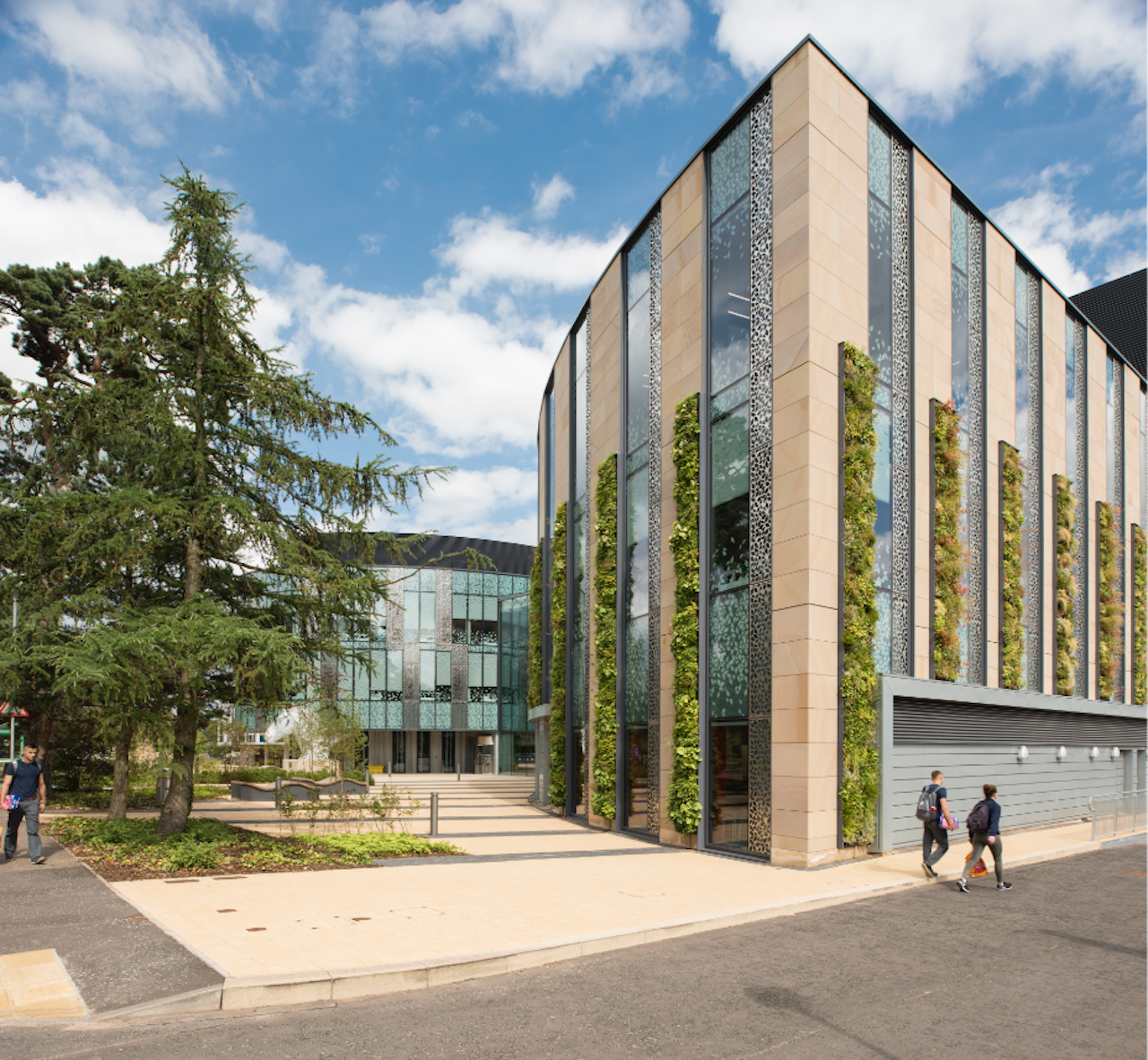
A successful living wall starts with great design. Whether you’re designing a new building, upgrading an existing one or working on a landscaping scheme living walls can provide significant environmental benefits and a stunning visual impact.
Whether your client has requested a living wall, there are regulations to comply with, or you are thinking of proposing the concept as part of the design process, we have experience as a team to work with you throughout the process from initial ideas to final installation. Make your next project really stand out, naturally.
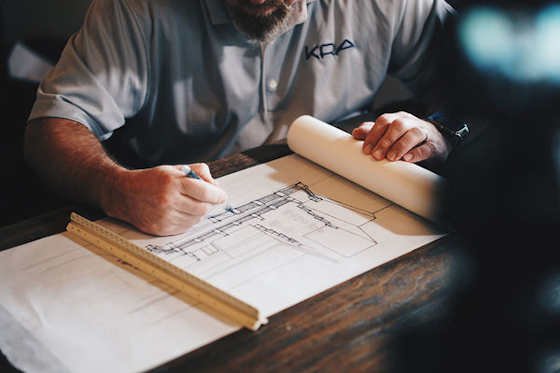
Created by architects, for architects. You can also compare products and specifications to find the best match for your project. Everything you need to help you specify in one place!

Download your BIM objects and other technical information to pull into your specification here.
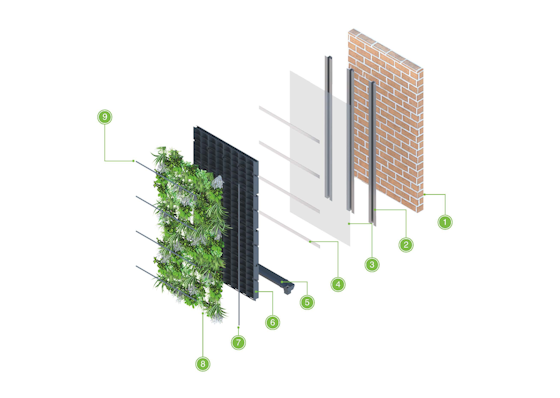
Arup
Aecom
Atkins
BDP
Foster + Partners
Zaha Hadid
Sheppard Robson
Allies and Morrison
TP Bennett
Scott Brownrigg
Grimshaw
Stride Treglown
Broadway Malyan
Make Architects
Pascall+Watson
Bond Bryan Architects
KSS Design Group
Featured case study
This extensive scheme is transforming the historic London Wall and creating a thriving new business quarter and public amenity space.
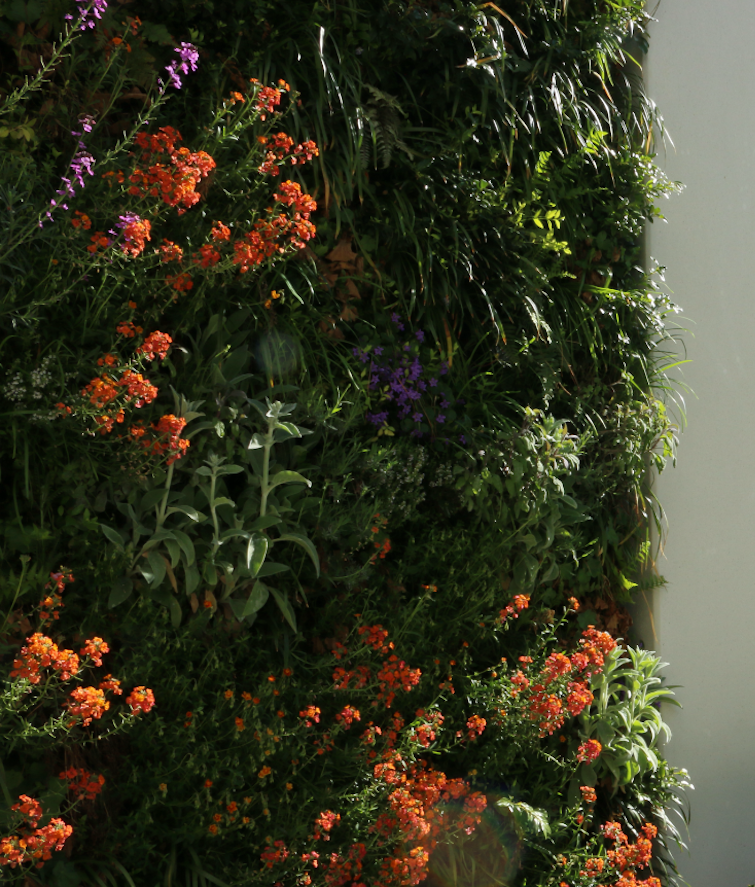
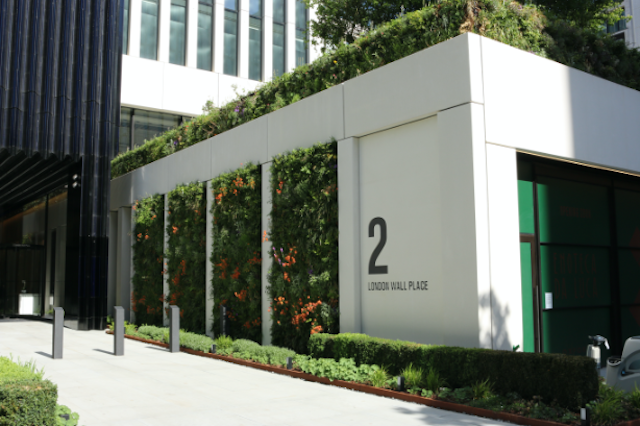
Featured case study
The Viritopia Living Wall system has been proved by M&S as being the most sustainable, boasting very little water usage and an organic substrate.
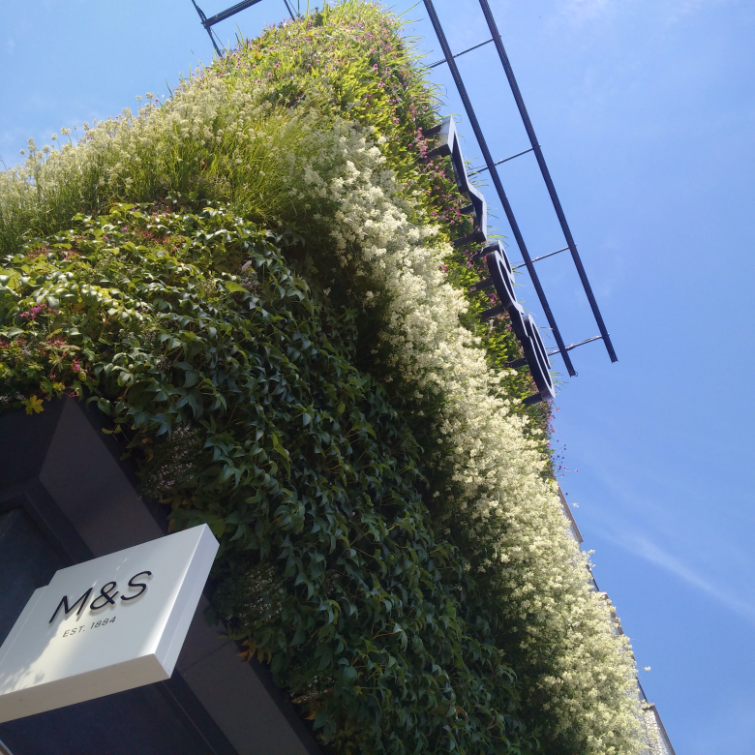
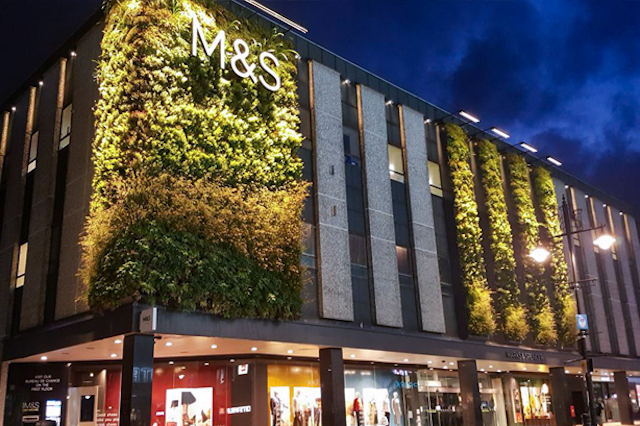
Featured case study
The Viritopia Living Wall system was chosen for its modular design and long lasting impact (with maintenance in place the living wall should last forever!).
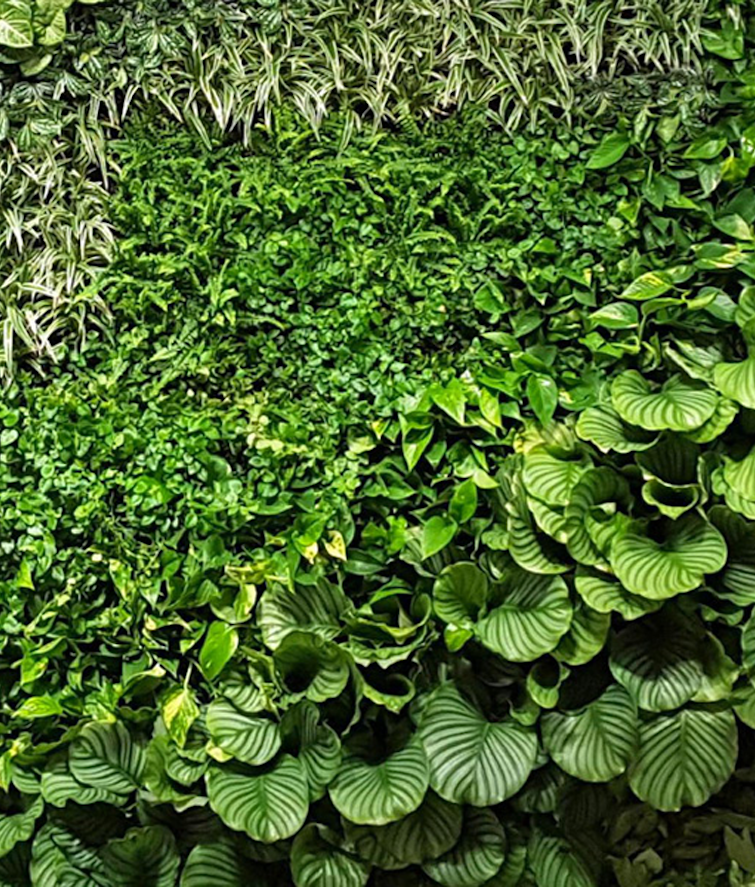

Featured case study
Viritopia were delighted to install this living wall for Nando’s, working with the sign team to create a huge living billboard on the side of the eatery.

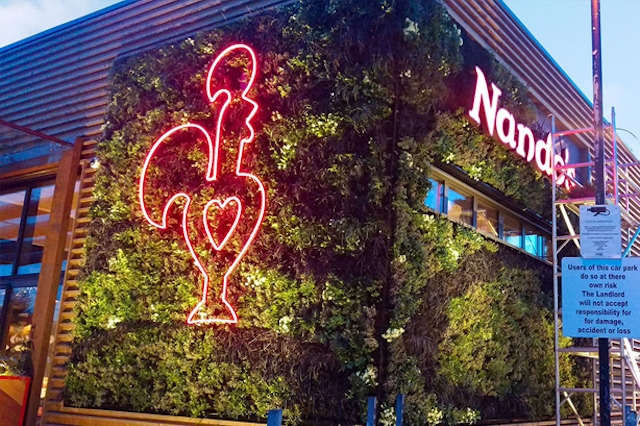
A living wall does act as an additional layer of insulation on a façade, as the soil especially is effective at absorbing heat. However, living walls cannot be given a U-Value, so while they are proven to have insulating properties, you cannot include this in your calculations.
To install living walls outside of the UK, we either supervise a certified partners team or carry out the works ourselves. This does depend on the location, for example in Australia we have a certified partner who’d carry out the work under our remote supervision, whereas in France and Switzerland, we have installed several living walls ourselves.
As our living walls are natural (organic soil substrate and real plants) and are essentially vertical gardens, they do need water just as any plant or garden needs water. As living walls are vertical, the irrigation of them happens a little differently to how you’d water a pot plant or your garden. Therefore with every project we install an irrigation system, which feeds water into the soil through a dripper pipe, running along the top of every module. This ensures healthy growth of the plants.
We work with the client to schedule the best times for maintenance to minimise any disruption. For example, if the living wall is on a high street or in a shopping centre, we could carry out our visits in the early hours or at night to limit disruption during the day. A good example of this is the project at M&S Cheshire, where we have multiple living walls in the car park. All our visits are carried out between 4-7am to limit disruption to shoppers and workers.
The access requirements for maintenance depend on the living wall and location. For any living wall over 6 metres high, extra equipment is required for the twice-yearly horticultural husbandry visits. This could be a cherry picker, scissor lift, scaffold tower, spider lift or even access by abseil.
The maintenance cost of a living wall is approximately 10-12% of the original cost of the installation, per year. This cost does include access equipment.
The warranty on the Viritopia Living Wall System is 12 months from the original date of installation. This includes the Viritopia Living Wall module and the irrigation equipment. For more information on our warranty conditions, please get in touch!
The only time the substrate in a green wall will need to be replaced is when we replace a plant. In this case we add the substrate removed with the plant back in. We allow for 5% of plants being replaced every year under maintenance (due to climate change and ageing).
To ensure your living wall plants can grow at a high level, you need to focus on selecting the right species for the location, for example catering for greater exposure to wind and sun. As always, it’s down to plant selection and design.
There is no maximum height to which a living wall can be installed, however there are limiting factors such as fire regulations and access.
We do provide a full planting design service, but we’re also happy to review any plant lists developed by others.
The maintenance programme of a living wall is different for every project. However, what is carried out throughout is consistent. Maintenance visits take place typically monthly, but can be fortnightly, depending on the client’s requirements. These include a visual inspection, adjusting the irrigation levels if necessary and ensuring the soil and plants are in full health. Horticultural husbandry visits are carried out twice a year, and are more intensive. These can include checking for pest and disease, trimming and pruning, applying biological control through the irrigation system or replacing plants where necessary.
For a full maintenance guide and schedule example, please get in touch and we’ll share.
A living wall can be installed in a saline environment. Once again it’s down to design and the maintenance schedule. Ensure the plants and soil are suited to the conditions, and the maintenance schedule is appropriate, and your living wall will be kept in optimum health. In fact, our living wall at Venue Cymru is a perfect example of that, where it’s facing the sea.
If water is calibrated correctly there shouldn’t be enough water coming out the wall to justify recycling.
Yes, rainwater can be used to irrigate a living wall. We call this rainwater harvesting. However, it is something to be discussed as early as possible in the project, as how the rainwater is collected and fed into the irrigation system needs to be planned out and integrated into designs.
A lot of lessons have been learnt since we began experimenting with living wall systems back in the 2000s. Here are some we’ve learnt along the way, so you can avoid making the same mistakes:
This blog on ‘What could go wrong with a living wall’ goes into more detail on each of these points listed above, so if you’d like to learn more, we’d recommend having a read here.
There are a few things that you can do to mitigate the fire risk on a living wall. This includes adapting the build-up, plant selection, irrigation and maintenance schedules. Let’s take a look at what you can do to improve the safety of a living wall in each area:
Build-up:
If you integrate an A2 non-combustible build-up from the inside to the outside of the building, clad the building with a calcium silicate board or another material, then install the living wall on top of that, that improves the fire safety.
The second point is to include fire breaks every 2 metres up the elevation, to contain and stop the spread of fire.
Plant selection:
Avoiding dry grasses and highly oily foliage in your plant palette will improve the fire safety of your finished design. Moving away from the dry oily species and towards evergreen plants that have limited leaf drop is recommended.
Irrigation:
Irrigation is essential to fire safety as a basic rule. With the Viritopia Living Wall System, we design each living wall to have an electronic solenoid at every vertical metre, so each section of planting can be carefully monitored, and irrigation adjusted. This is to ensure the moisture level is kept at around 45%. As an addition to this irrigation system (which is a standard part of every living wall project we do), you could have an independent sprinkler system that comes out of the planting and drenches the façade in the event of a fire.
Maintenance:
The most essential part to mitigating the fire risk of a living wall is ensuring maintenance. It must be a part of the property management scope that the green infrastructure is maintained and should be regarded just as seriously as any other element of the building.
This ensures that the planting and soil is kept in full health, at the right moisture levels with no dry or dead planting (which is more combustible) and the irrigation is serviced regularly.
Living walls can be installed anywhere, as long as there is suitable lighting (natural or artificial), access, and within fire regulations. To find out more on fire regulations, we recommend you having a read of this blog.
The Viritopia Living Wall System has achieved a fire rating of B,s2-d0, as tested to BS EN 13501-1. This is the highest rating possible for a living wall system.
Be aware of systems that claim to have a Class A rating. These are often misleading, as only components of the system have been tested (without the plants and substrate), so not representing the reality of the finished build-up.
To find where living walls can and can’t be used, read this blog which covers all you need to know about living wall fire regulations. You could also join us for our live fire focused CPD: How and Where to Design a Living Wall to Meet Fire Regulations. Check out upcoming sessions here.
Yes, a living wall can be installed on a north facing façade. As with any living wall, the planting design needs to be created for the aspect of the elevation (north, south, east, or west) and general conditions (wind, shade, climate). For a north-facing green wall, we would design with shade-loving species, such as some ferns and perennial flowers. The living walls at United Caps and most of the high walk at London Wall Place are good examples of this. It’s simply a case of designing with shade-loving plant species and irrigating the soil and plants to suit.
Design & specification recommendations
Booking an educational and informative CPD presentation
Technical estimations & site visits
Tailored project support